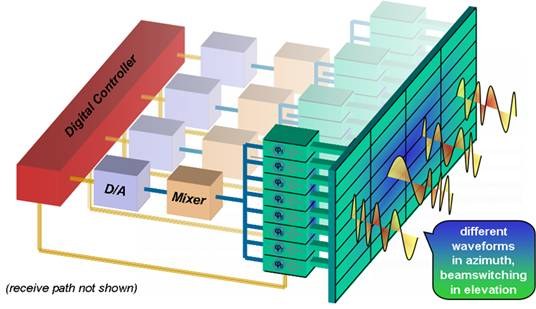SAR Techniques
Intensive research is on-going for a new generation of Smart Multi Aperture Radar Techniques (SMART). The main innovative characteristic of this forthcoming generation of SAR systems is the use of multiple elevation and/or azimuth channels combined with Digital Beam-Forming (DBF) capability. This allows for the synthesis of multiple or dynamic digital receiver beams. In general SMART operational modes produce one or more digital receiver beams, each covering an unambiguous range segment on the ground. Utilizing the Digital Beam-Forming (DBF) property of SMART sensors, these receiver beams are actually formed on the recorded echo signal without the necessity for analog beam-forming capabilities. These beams may additionally be scanned in elevation direction to follow the echo on the ground.

In the most general sense SMART sensors allow a relaxation of the system design parameters, by increasing the degrees of freedom. Specifically, for a given geometric resolution this results in systems with wider swath, higher signal-to-noise ratio and lower ambiguity-to-signal ratio, all being key requirements on SAR systems, which enable further improvement of the performance; for example an increased swath width can be used to reduce the revisit time and by this enable frequent observations.

The key focus of the “SAR-Techniques” Group lie in the translation of SAR requirements (usually beyond those of state-of-the art systems) into a coarse instrument design that is capable of operating innovation imaging modes to fulfil the requirements. The competence of the group lie in the performance estimation of SAR systems utilizing highly advanced techniques and the parallel development of these techniques. Combined with error analysis the performance estimation is also used to advice suitable calibration techniques. This is applied to a broad variety of systems covering planar antenna and reflector-based DBF systems designed for operation at frequencies ranging from P-band to Ka-band. The group is involved in a number of national, European and International projects.

